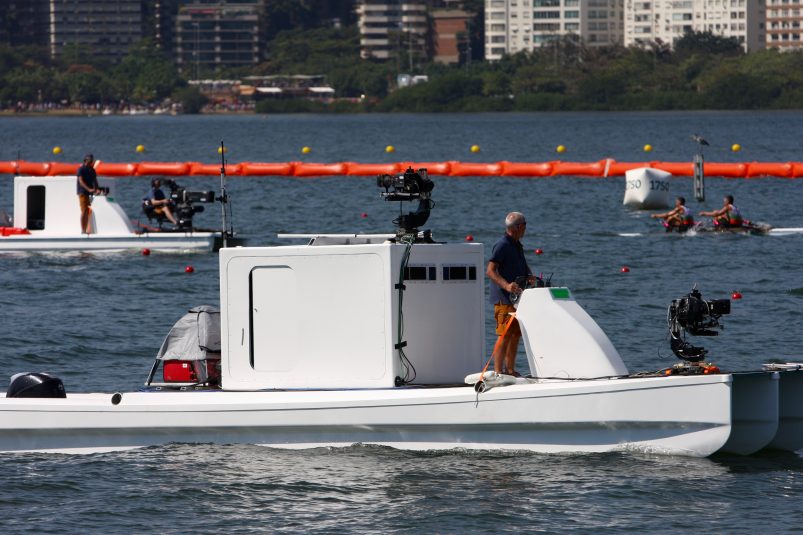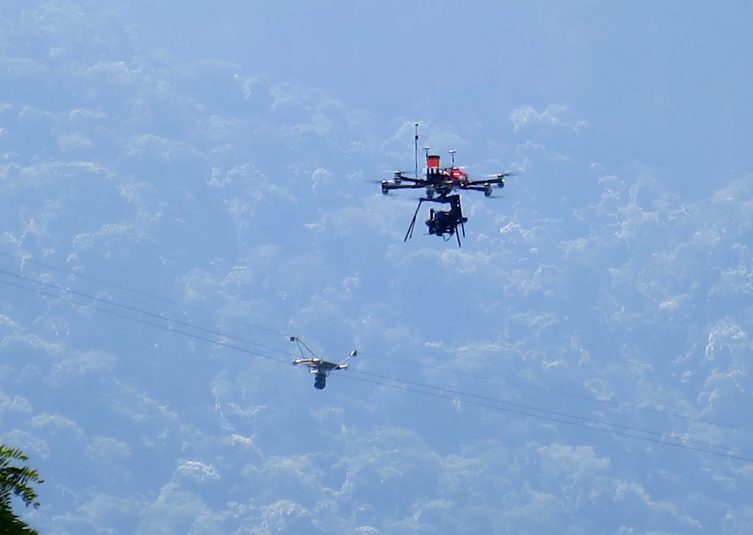Live from Rio: Rowing Coverage Takes to the Skies; EVS Takes to the Waves
Olympic rowing coverage started early on the morning of August 6 and it was one of the first sports to get underway with a morning full of scull heats that continued to show why rowing coverage is one of the more unique sports productions around thanks to a wide variety of specialty cameras including a point-to-point cable system that spans two kilometers across Rodrigo de Freitas Lagoon.

The camera on this boat is tied to an on-board EVS system that is clipping high-speed shots and then transporting them to shore via RF.
Coverage from the shore includes eight handheld cameras and 12 hard wired camera, including a super-slo motion camera system near the finish line. And aerial coverage includes a drone flying alongside the course over the lagoon (and far away from spectators) as well as the aforementioned Camcat cable system.

The rowing events at the Olympics have two forms of aerial coverage: a Camcat cable cam and a drone.
The production is also making use of seven cameras that are mounted on five boats that are on the course. Two of those are high-speed super-slow motion camera systems and a third is a regular super slow motion camera system. The most unique aspect of the production is that there are EVS systems and an operator on the boats that have the high-speed super slow motion system so that the clips can be created on the boat and then sent back to the production team on shore via wireless transmission. By sending just the clip the production team doesn’t have to deal with attempting to transfer massive amounts of camera data from the boats.
For a complete gallery of photos taken from Lagoa Stadium click here.
